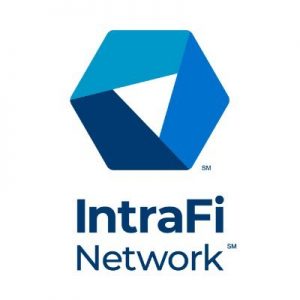With the pandemic ebbing and the economic situation still uncertain, banks are trying to figure out how to position their institutions for the future.
In a recent webinar, I spoke with Darling Consulting Group President, Matt Pieniazek and Abrigo Managing Director, Dave Koch about how bank leaders can capitalize on the current environment. While we discussed an array of topics – from the need to reimagine what asset-liability committees can and should be to the importance of thinking differently about pricing – my top three takeaways were:
1. Focus on developing relationships with new customers
At the start of the pandemic, deposits at some banks swelled by as much as 20%. Today, excess liquidity remains a concern. However, just over a year ago, many banks had high loan-to-deposit ratios and were wondering from where their next dollar would arrive.
Bank leaders can think of their balance sheets as two separate financial statements: a traditional balance sheet and a COVID balance sheet composed of assets and liabilities from new customers. Hidden in those latter financial statements, one layer below the numbers is a huge opportunity. Given the correlation between core deposits and franchise value, bank leaders can bolster their institutions for years to come by taking steps to develop strong, lasting relationships with new customers today. Sure, those customers could withdraw their funds as soon as the economy improves. But even if they do, banks will be closer to winning their loyalty than they were before an economic downturn. During periods of financial or economic hardship, people have a way of remembering who was in their corner.
It is also important to remember that, in an average year, bank leaders would have to spend marketing dollars to attract these same individuals and businesses to their institutions. The fact that new customers are already customers (not prospects) represents an opportunity in and of itself. However, if banks do not act now to cultivate loyal relationships, they risk losing their new customers when the economy turns.
2. Derivatives deserve a closer look
Many bank leaders are reluctant to embrace swaps. Some think them too complex, others don’t want to deal with the associated regulatory burdens, and others are concerned about exposure to credit risk or risks unseen. At the same time, more bankers are using them and finding them beneficial.
Swaps offer pricing flexibility and can free up capacity for fixed-rate lending. They enable banks to hedge against rising rates and give customers what they want. For instance, while banks may prefer variable-rate positions, particularly in a low-rate environment, customers tend to demand long-term, fixed-rate loans. With an interest-rate swap, both outcomes are effectively possible.
Now is a good time for bank leaders to reevaluate the use of swaps at their institutions. By modeling different scenarios with swaps on their balance sheets, they can start to understand when it makes sense to use them. If they aren’t using swaps, they should explain why and the conditions under which they would.
3. Review sources of wholesale funding
In a healthy economy, loans outgrow deposits – the question is when and by how much. If banks suddenly find themselves in a situation where money is going out the door, they may need to replace deposits with funds that offer a spread. Many will not want to exit certain asset positions.
Of course, wholesale funding is also an excellent tool for managing interest-rate risk – much more so than retail deposits. Given that we are in a once-in-a-century funding environment, now is the time for bank leaders to take a harder look at their sources of funds and funding strategies. They could find ample opportunities to lock in low rates, refinance higher-cost funding and diversify their funding sources.
Now is the time to prepare. The current environment poses many challenges. However, with COVID-19 vaccinations growing throughout the population and new case numbers falling by the day, bank leaders should be taking steps to prepare for a potential rebound. They should be mindful that often the most significant risk to an institution is the risk of doing nothing. This axiom holds particularly during times of economic uncertainty, which can cause business disruptions and also have a paralyzing effect on decision-making.
IntraFi Network is the number one provider of deposit products to U.S. financial institutions, a leading provider of overnight and term funding solutions and one of the nation’s best places to work. The company’s network of nearly 3,000 banks – the largest of its kind – brings scale, stability, and the confidence of working with a category leader. Its members include most of the nation’s community banks, minority depository institutions, and community development financial institutions.










